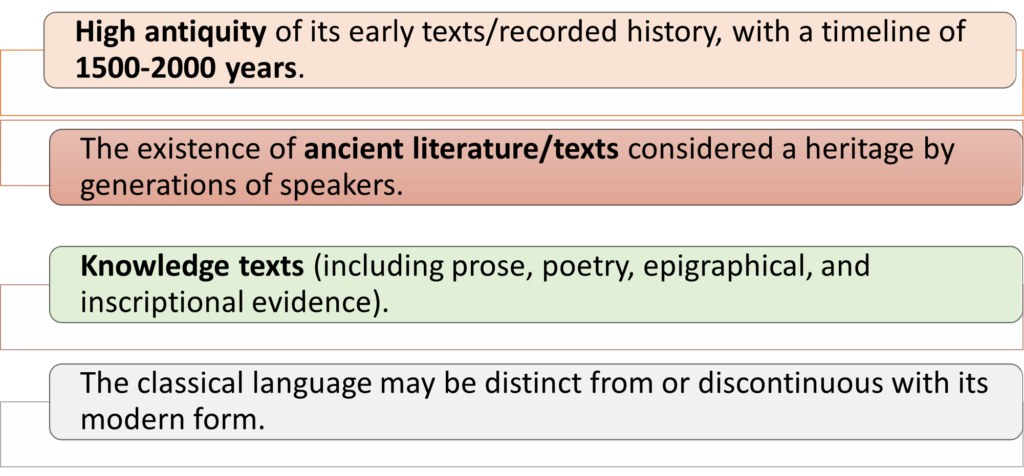(General Studies-I – Society Section – Salient features of Indian Society, Diversity of India. History Section – Modern Indian History from about the middle of the eighteenth century until the present- significant events, personalities, issues.)
- A recent Supreme Court ruling to remove caste details from prison registries marks a crucial step in ending caste-based discrimination in Indian prisons.
- The judgment also highlights the unconstitutional practice of assigning menial tasks to marginalized prisoners based on caste, violating Article 15, which prohibits caste discrimination.
- It is quite remarkable that prison authorities and State governments have done so little about these aspects since independence. It is as if the prison system has been out of the reach of the core philosophy of the Constitution.

History of the Caste System –
- India’s caste system, rooted in the ancient “varna” system, dates back around 3,000 years.
- Caste in India is traced through three main theories:
- Guna theory, which links caste to innate qualities (gunas) like virtue, passion, and ignorance;
- Occupational theory, which associates caste with hereditary professions; and
- Divine theory, attributing caste divisions to divine will or cosmic order.
- It divided society into four main classes: Brahmins (priests), Kshatriyas (warriors), Vaishyas (traders), and Shudras (labourers).
- Those outside the system, like Dalits (formerly “untouchables”) and tribal communities, were socially excluded.
- Over centuries, this system evolved into a rigid hierarchy, with inter-caste marriages forbidden and lower castes subjected to discrimination.
- Though officially abolished, caste-based discrimination persists in many areas, including prisons

Debate on Caste Between Gandhi and Ambedkar –
| Aspect | Mahatma Gandhi | Dr. B.R. Ambedkar |
| View on Caste System | Gandhi believed in reforming the caste system but upheld the varna system. He did not call for the complete abolition of caste distinctions. | Ambedkar in Annihilation of Caste, strongly opposed the caste system and called for its complete eradication. . |
| Untouchability | Gandhi condemned untouchability and worked for the upliftment of Harijans (whom he referred to as “children of God”). | Ambedkar rejected the term Harijan. He argued that untouchability is inseparable from the caste system, and only by abolishing the caste system can untouchability end. |
| Endogamy | Gandhi did not challenge endogamy (marriage within one’s caste) and focused on social harmony rather than eliminating caste-based marriage norms. | Ambedkar identified endogamy as the foundation of caste discrimination. He argued that caste persists because of strict endogamy, and inter-caste marriage is necessary to break caste barriers. |
| Role of Shastras | Gandhi did not blame the Hindu shastras (scriptures) for perpetuating caste discrimination.. | Ambedkar considered the Hindu shastras as the root of caste oppression, unless these texts are rejected, true caste reform is impossible. |
| Approach to Reform | Gandhi advocated for moral reform within the Hindu social framework, aiming for caste harmony through upliftment and social unity rather than dismantling the system. | Ambedkar favored legal and structural reforms, including constitutional measures and affirmative action, to abolish caste. He emphasized education and political activism for Dalit empowerment. |
| Religion and Caste | Gandhi saw Hinduism as capable of reform and did not see a need to abandon it for caste abolition. | Ambedkar viewed Hinduism as fundamentally tied to the caste system and believed conversion was necessary to escape its discriminatory structures. |
| Legal and Political Reforms | Gandhi focused on social and moral reform through non-violence and persuasion, with limited use of legal means to address caste discrimination. | Ambedkar championed legal and constitutional reforms, including reservations and anti-discrimination laws, as essential to dismantling the caste system and promoting social equality. |
Reasons for Persistence of Caste based discriminations –
- Mandal Commission (1980):
- Socio-economic Inequalities: Caste remains linked to economic disparities and unequal access to resources.
- Endogamy: Marriage within one’s caste perpetuates caste boundaries.
- Caste-based Occupations: Occupational roles tied to caste identities persist despite modernization.
- Sachar Committee (2006):
- Social Exclusion: Dalits and lower castes face systemic exclusion, reinforcing caste hierarchies.
- Education and Employment Disparities: Unequal access to education and jobs sustains caste divisions.
- Kaka Kalelkar Commission (1955):
- Cultural and Religious Factors: Beliefs in varna and jati legitimize caste divisions.
- Purity and Pollution Practices: These practices maintain social distance and caste segregation.
- National Commission for Scheduled Castes (NCSC):
- Caste Discrimination: Discrimination and violence against Dalits further entrench caste divisions.
- Caste-based Politics: Political competition along caste lines reinforces caste identities.
- Justice Rohini Commission (2017): The creation of sub-castes, especially within OBCs, adds complexity to the caste system and intensifies competition for resources.
- Gore Committee (1973): Caste identities are more entrenched in rural areas, where social and economic interactions are heavily influenced by caste.
| Indian Constitution and laws aimed at eradicating caste discrimination Article 15: Prohibits discrimination on grounds of religion, race, caste, sex, or place of birth.Article 17: Abolishes “untouchability” and forbids its practice in any form.Article 46: Directs the State to promote the educational and economic interests of Scheduled Castes (SCs), Scheduled Tribes (STs), and other weaker sections.Article 330 and 332: Provide for the reservation of seats for SCs and STs in the Parliament and State Assemblies.The Scheduled Castes and Scheduled Tribes (Prevention of Atrocities) Act, 1989: Aims to prevent atrocities against SCs and STs, providing for stringent punishments.Article 338: Establishes the National Commission for Scheduled Castes to investigate and monitor matters related to their safeguards.Reservation Policies: Mandate affirmative action in education and public employment for SCs, STs, and Other Backward Classes (OBCs) to address caste-based inequalities. |
Thus, to eradicate caste discrimination, both societal mindset and structural frameworks must undergo transformation. Legal reforms alone are insufficient; dismantling deep-rooted prejudices and fostering equality through education, social awareness, and progressive policies are crucial for lasting change.





